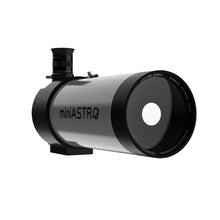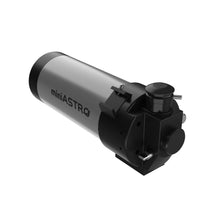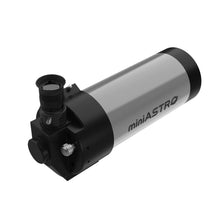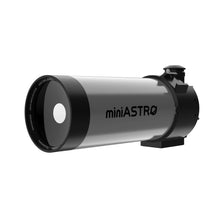

miniASTRO Telescope MAK 90
Hey Friends,
- Well built. Low-quality scope will ruin our interest and passion for astronomy.
- Simple. As users ourselves, we know how important it is to make it simple to use and easy to carry, so it's more likely to end up in travel packs than on shelves. (More on bloody lessons we learned below)
- Essential. Astronomy can be daunting, especially for beginners who don't know what they should start with. We want to make it a no-brainer for beginners. The package only got what has to be there. Nothing more.
- Affordable. Being essential is not enough. It has to be cost-friendly. By selecting models that are in mass production, making countless negotiations with suppliers, and calculating a profit that is barely enough to make our business sustainable, we can guarantee this is the best-valued scope in its class.
1. GoTo or not?
2. MAK VS Refractor
- Mak is money wise to achieve a long focal length with little body, but a small view field. (compared with refractor)
- Refractor is good at wide view fields, but it will be super expensive for long focal length with refractor.
- Planets, detailed lunar crater views, double stars, planetary nebula, small tight open clusters (eg Wild Duck), and globular clusters are a Mak’s domain, at a fraction of what a refractor would cost to give equal performance on these objects.
- We can then take the saved money and get a rich field telescope (small focal length, low magnification telescope) to give us the big open clusters, big nebula and Milky Way sweeping, that the Mak can’t deliver.
3. Quality VS Others
- In order to ensure high quality. We have screened 100 factories, and finally visited 9 of tops.. We are lucky to find the big brand's OEM factory to work for us.
- So, it's aluminum tube body, genuine high-quality optical lens, top-level workers.
4. Dual Channel Mak VS Single Channel Mak
5. Price, MSM Dual channel Mak VS other single channel Mak
What can we do for our users?
Back to our starting point, we want to make astro affordable, that's why we dig for the original factory, one for quality, one for price.
So, here it comes, during the Black Friday sale period, all our users could get the kit (MSM Dual channel Mak tube + 2 eyepieces + Reddot finder) at $189.
Again, with $189, you will get MSM Dual channel Mak, instead of Single channel Mak. Don't forget to checkout with code "BFCM" to achieve the price of $189.
Hope you enjoy it.
Overview
Features
-
Internal 90° Degree Diagonal & Flip Mirror System
The internal flip mirror can direct the light either straight to the rear of the telescope or reflect it 90-degrees to the eyepiece, allowing
-
Viewing with eye
-
Attachment of a camera on the back of the scope (Camera Specific T-Mount Adapters required)
-
BYOD packaging
So you don't pay for what you already have and this gives you a lot of flexibility in how you build your kit. Please note mount and tripod are NOT included and required for proper use.
What's in the box
- Optical Tube Assembly
- Red dot finder
- 1.25" 12mm Plössl Eyepiece
- 1.25" 25mm Plössl Eyepiece
- Adapter for T-ring (Output to M42 x 0.75 T-threads)
Specs
|
Optical Design |
Maksutov-Cassegrain |
|
OTA Tripod Socket |
1/4'' |
|
Aperture (mm) |
90mm |
|
Focal Length |
1250mm |
|
Focal Ratio |
F/13.8 |
|
Eyepiece size |
1.25" |
|
Focal Length of Eyepiece 1 |
25mm |
|
Magnification of Eyepiece 1 |
50 x |
|
Focal Length of Eyepiece 2 |
12mm |
|
Magnification of Eyepiece 2 |
104 x |
|
Finderscope |
Red dot finder |
|
Optical Tube Material |
Aluminum |
|
Adapter for T-ring output
|
M42×0.75 |
|
OTA Weight |
1.6 kg |
|
Box Dimensions (LxWxH) |
391x 202 x 165 mm |






